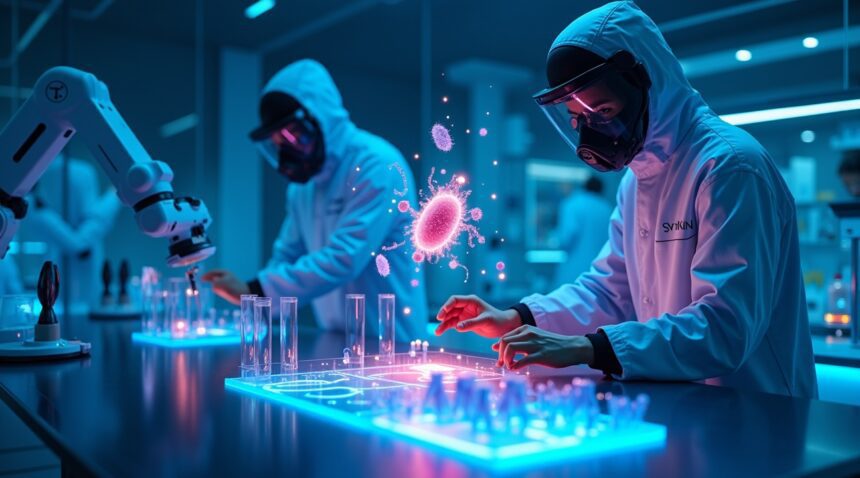Scientists have achieved groundbreaking success in creating artificial life forms that operate beyond the constraints of natural evolution, including semi-synthetic E. coli with six DNA bases and fully synthetic yeast chromosomes that exhibit unique metabolic capabilities.
Key Takeaways
- Scientists successfully engineered semi-synthetic E. coli bacteria with six DNA bases instead of the standard four, enabling entirely new protein synthesis capabilities not found in nature.
- Artificial cells demonstrate remarkable resilience, maintaining stability at temperatures reaching 50°C while incorporating synthetic cytoskeletons that allow controlled shape-changing abilities.
- The European MiniLife project represents a 13 million euro initiative to create fully synthetic living systems from non-living chemicals, focusing on organisms capable of Darwinian evolution with human-selected properties.
- These synthetic organisms offer revolutionary applications across medicine, manufacturing, and environmental cleanup, including targeted drug delivery, bioremediation in extreme conditions, and production of novel industrial compounds.
- Creating artificial life raises profound ethical questions about the nature and value of life itself, particularly regarding ecological integration and the long-term consequences of synthetic organisms evolving in natural environments.
Real-World Implications
Transforming Industries
The development of synthetic life forms has opened new frontiers in biotechnology. These organisms are being engineered to perform tasks such as targeted drug delivery and production of complex compounds not easily synthesized using conventional means.
Environmental Benefits
One promising application of synthetic biology is bioremediation. Synthetic microbes can be designed to survive in extreme environments and break down pollutants more efficiently than naturally occurring organisms.
Ethical Considerations
Despite the promise, synthetic life raises critical questions. While researchers design these life forms for specific purposes, the ecological implications and their ability to evolve independently in the wild must be closely monitored.
Conclusion
As synthetic biology continues to evolve, its impact on science, industry, and society will be profound. Balancing innovation with ethical responsibility will be essential to ensuring that artificial life benefits humanity while minimizing risk.
Scientists Successfully Create Semi-Synthetic E. coli with Six-Base DNA
Scientists at Scripps Research Institute have achieved a breakthrough that challenges the fundamental building blocks of life itself. Floyd Romesberg’s team engineered a semi-synthetic E. coli organism that operates with six DNA bases instead of the four found in all natural life forms. While natural DNA relies solely on adenine (A), thymine (T), cytosine (C), and guanine (G), these lab-created organisms incorporate two additional bases designated as X and Y.
This expanded genetic alphabet opens unprecedented possibilities for protein synthesis and cellular behaviors that simply don’t exist in nature. The additional bases function as information storage units, allowing scientists to encode instructions for entirely novel proteins. These synthetic organisms remain metabolically active while carrying genetic information that exceeds anything found in natural systems.
Yeast Genome Engineering Reaches New Milestones
Parallel research efforts have culminated in the complete synthesis of the yeast Saccharomyces cerevisiae genome, with SynXVI representing the successful creation of its 16th chromosome. This achievement represents more than a decade of intensive research and demonstrates that scientists can now construct entire chromosomes from scratch. The synthetic yeast exhibits unique metabolic traits that distinguish it from its natural counterparts, including enhanced glycerol metabolism capabilities at elevated temperatures.
These synthetic cells showcase behaviors and metabolic pathways that evolution never produced. The artificial organisms maintain all essential life functions while incorporating genetic modifications that grant them capabilities beyond natural limitations. This work represents a significant leap forward in synthetic biology, proving that artificial intelligence and genetic engineering can collaborate to create entirely new forms of life.
The implications extend far beyond academic curiosity. These lab-created organisms could potentially produce:
- Novel pharmaceuticals
- Environmental cleanup agents
- Industrial compounds that natural organisms cannot manufacture
The successful creation of metabolically active synthetic cells marks a pivotal moment in genetic engineering, demonstrating humanity’s growing ability to design life forms with specific purposes.
Scientists continue refining these techniques, exploring how synthetic biology can address real-world challenges through genome synthesis. The work establishes a foundation for future developments where engineered organisms might serve specialized functions in medicine, manufacturing, or environmental restoration. Each advancement brings researchers closer to creating truly artificial life forms that operate according to human-designed specifications rather than evolutionary constraints.
European MiniLife Project Aims to Create Fully Synthetic Living Systems
The European Research Council launched an ambitious 13 million euro initiative in 2023 called the MiniLife project, marking a significant milestone in synthetic biology research. This groundbreaking endeavor represents one of the most comprehensive attempts to bridge the gap between inanimate matter and living systems through controlled laboratory conditions.
Scientists working on this project have already achieved remarkable breakthroughs by synthesizing novel, metabolically active life forms directly from non-living chemicals. These synthetic organisms demonstrate fundamental biological processes, including the ability to consume nutrients, process energy, and maintain basic cellular functions. The achievement showcases how artificial intelligence and advanced computational models assist researchers in designing these unprecedented biological systems.
Creating Life with Human-Selected Properties
Current research efforts focus on developing simple synthetic cells capable of Darwinian evolution, opening possibilities for entirely new forms of life with characteristics chosen by humans. The implications extend far beyond basic scientific curiosity, as these synthetic organisms could potentially address specific challenges in medicine, environmental cleanup, or industrial applications. Scientists envision creating life forms that excel at particular tasks, such as producing specific compounds or thriving in extreme environments where natural organisms struggle.
The project’s scope includes several key objectives that distinguish it from previous synthetic biology efforts:
- Developing synthetic cells that can grow and divide independently
- Engineering systems capable of evolutionary adaptation over time
- Creating organisms with properties not found in natural life
- Establishing controlled environments for synthetic life development
- Integrating computational design with laboratory synthesis
However, current technical limitations prevent lab-created artificial life from matching the evolutionary complexity of natural organisms. Despite significant advances, synthetic life forms remain relatively simple compared to even the most basic natural microorganisms. Natural evolution has refined biological systems over billions of years, creating intricate networks of molecular interactions that scientists are still working to understand and replicate.
The MiniLife project builds upon decades of research in synthetic biology, where scientists have gradually learned to manipulate and design biological components. Previous achievements include creating synthetic DNA, engineering metabolic pathways, and developing artificial cellular membranes. These foundational technologies now converge in efforts to assemble complete synthetic living systems.
Researchers face numerous challenges as they work to create synthetic life that can truly compete with natural organisms. The complexity of cellular metabolism, the precision required for genetic replication, and the delicate balance of biochemical reactions all present significant hurdles. Additionally, ensuring these synthetic organisms remain stable and controllable requires careful consideration of safety protocols and containment measures.
The project’s timeline spans several years, with researchers expecting incremental progress rather than sudden breakthroughs. Each advancement builds upon previous discoveries, gradually expanding the capabilities of synthetic life forms. The team includes experts from multiple disciplines, combining expertise in chemistry, biology, physics, and computational sciences to tackle this multifaceted challenge.
Recent developments in related fields, including advances in liquid robotics and AI-generated content, demonstrate how rapidly emerging technologies can transform scientific possibilities. The MiniLife project represents a similar paradigm shift, potentially revolutionizing our understanding of life itself.
As research progresses, scientists continue refining their approaches to synthetic life creation. The project’s success could establish new standards for biotechnology applications and provide insights into the fundamental principles that govern all living systems. While current synthetic organisms remain far simpler than natural life, each advancement brings researchers closer to creating truly autonomous artificial life forms that could reshape our understanding of biology and evolution.
Artificial Cells Display Unprecedented Capabilities and Stability
Scientists at the Freeman Lab at University of North Carolina have achieved a breakthrough in synthetic biology by creating artificial cells that operate beyond the limitations of natural life. These engineered organisms feature synthetic cytoskeletons that enable remarkable shape-changing abilities while maintaining structural integrity under conditions that would destroy conventional biological systems.
The artificial cells demonstrate extraordinary resilience by sustaining stability at temperatures reaching 50°C (122°F). Natural cells typically begin to break down at temperatures far below this threshold, making these synthetic counterparts uniquely suited for environments where organic life cannot survive. I find this temperature resistance particularly significant because it opens possibilities for applications in extreme industrial settings or hostile planetary conditions.
Molecular Engineering Creates Lifelike Movement
These synthetic organisms incorporate sophisticated molecular robots constructed from DNA and protein actuators, all enclosed within specially designed artificial cell membranes. The cells respond to molecular signals by shifting their shape in controlled, predictable ways that mirror biological processes while offering enhanced precision. This controllable shape-shifting capability represents a fundamental advancement in how scientists can design artificial intelligence at the cellular level.
The engineering possibilities extend far beyond temperature resistance and shape manipulation. Scientists can now design synthetic life forms with entirely novel traits that don’t exist in nature, including:
- New forms of metabolism that process unconventional energy sources
- Enhanced drug resistance for pharmaceutical applications
- Specialized communication systems with bacteria using engineered DNA sequences
- Custom protein configurations that enable unique cellular functions
- Synthetic membrane compositions that provide superior durability
Research teams have also discovered that alterations in genetic marker placement within synthetic yeast create dramatic shifts in both growth patterns and metabolic processes. These modifications allow scientists to fine-tune cellular behavior with unprecedented precision, essentially programming life forms to perform specific tasks.
The implications stretch beyond laboratory curiosities. While some scientists have expressed concerns about artificial intelligence emergence, these synthetic cells represent a different category of engineered life that operates at the molecular level. Unlike digital AI systems that process information, these biological constructs physically interact with their environment through designed chemical processes.
The combination of thermal stability, programmable shape-shifting, and custom metabolic pathways positions these artificial cells as potential solutions for challenges ranging from environmental cleanup to space exploration. Scientists continue refining these synthetic organisms, pushing the boundaries of what constitutes life itself.
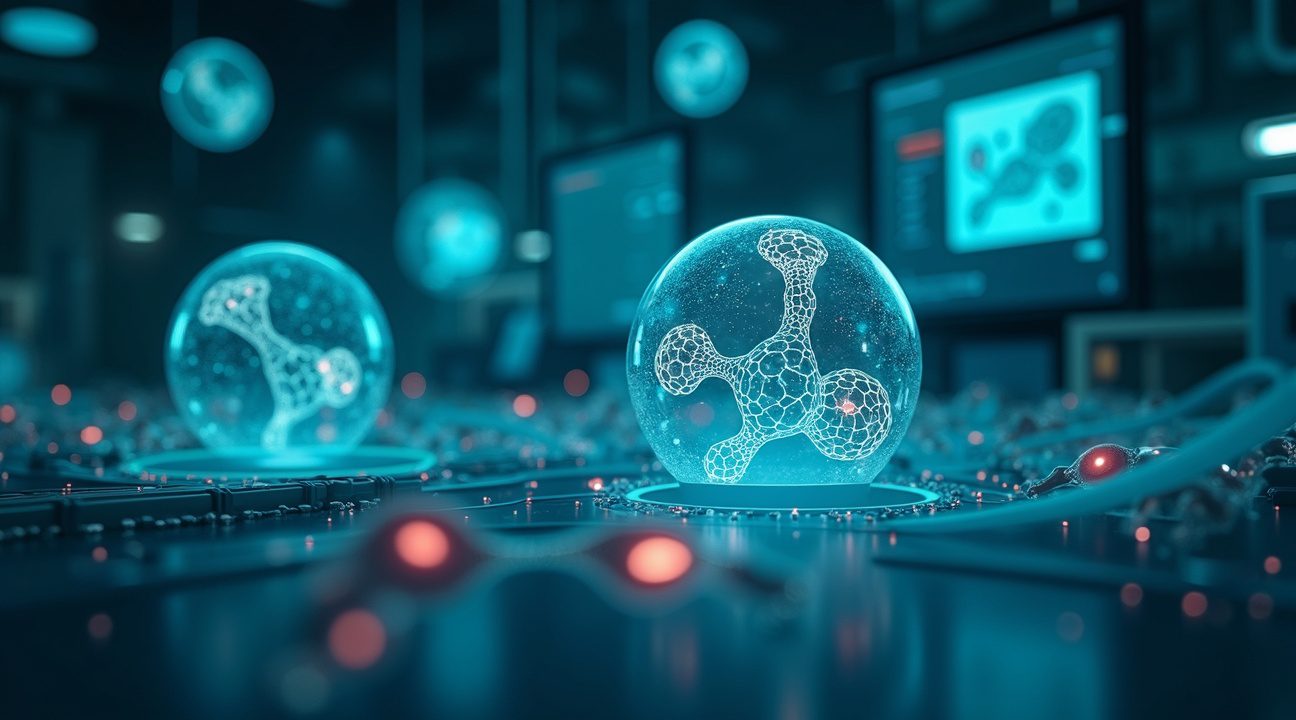
How Artificial Life Differs Fundamentally from Natural Organisms
The creation of artificial life marks a departure from billions of years of evolutionary processes that shaped every living thing on Earth. Unlike natural organisms that emerged through random mutations and environmental pressures, artificial life represents something entirely different — living systems born from human intention and design rather than chance.
Design Intent vs. Natural Evolution
The most striking difference lies in purpose and origin. Natural organisms developed their characteristics through countless generations of trial and error, with survival as the ultimate test. Artificial life, however, comes into existence with predetermined goals and functions programmed by its creators. Scientists can engineer these systems to perform specific tasks, from producing particular chemicals to surviving in extreme conditions that would kill natural life forms.
This intentional design allows artificial life to bypass the lengthy evolutionary process entirely. While natural selection required millions of years to develop complex traits, researchers can implement sophisticated functions directly into synthetic organisms from the moment of creation. The constraints governing artificial life don’t come from environmental pressures or competition for resources — they stem from the objectives and limitations set by their human designers.
Environmental Adaptation and Complexity Trade-offs
The relationship between complexity and resilience reveals another fundamental difference between artificial and natural life. Natural cells carry the weight of evolutionary history, containing intricate systems developed over eons. This complexity makes them remarkably adaptable but also vulnerable to environmental stress and disruption.
Artificial life forms present a fascinating contrast in this regard. Scientists can engineer them with several advantages over their natural counterparts:
- Simplified internal structures that reduce points of failure
- Resistance to specific environmental hazards like radiation or extreme temperatures
- Optimized metabolic pathways for particular tasks
- Enhanced stability in harsh chemical conditions
- Reduced dependency on complex nutrient requirements
However, this streamlined design often comes at the cost of the remarkable adaptability that characterizes natural life. While a synthetic organism might excel in its designed environment, it typically lacks the evolutionary flexibility that allows natural organisms to adjust to unexpected changes.
The philosophical implications run even deeper than these practical differences. Strong artificial life proponents argue that life itself represents a process that can exist independently of any specific physical medium. From this perspective, artificial intelligence paving the way for synthetic biology demonstrates that consciousness and life aren’t bound to carbon-based chemistry.
Conversely, weak artificial life advocates maintain that laboratory creations serve as sophisticated simulations or models of living systems rather than genuine life forms. They argue that true life requires the spontaneous emergence and self-organization that characterizes natural evolution, something that programmed systems cannot authentically replicate.
This distinction becomes particularly relevant when considering recent breakthroughs in synthetic biology and AI development. The debate echoes concerns raised by figures like James Cameron regarding AI emergence, where the boundary between artificial and natural intelligence becomes increasingly blurred.
The practical applications of artificial life continue expanding rapidly. Scientists can now create organisms specifically designed for biofuel production, environmental cleanup, or pharmaceutical manufacturing. These synthetic systems operate with precision impossible in natural organisms, yet they lack the unpredictable creativity that drives natural evolution.
Understanding these fundamental differences helps clarify why artificial life represents such a significant scientific milestone. Rather than merely copying nature, researchers have created entirely new categories of living systems with capabilities that complement rather than simply replace natural organisms. The implications extend far beyond laboratory applications, potentially reshaping how we understand life itself.
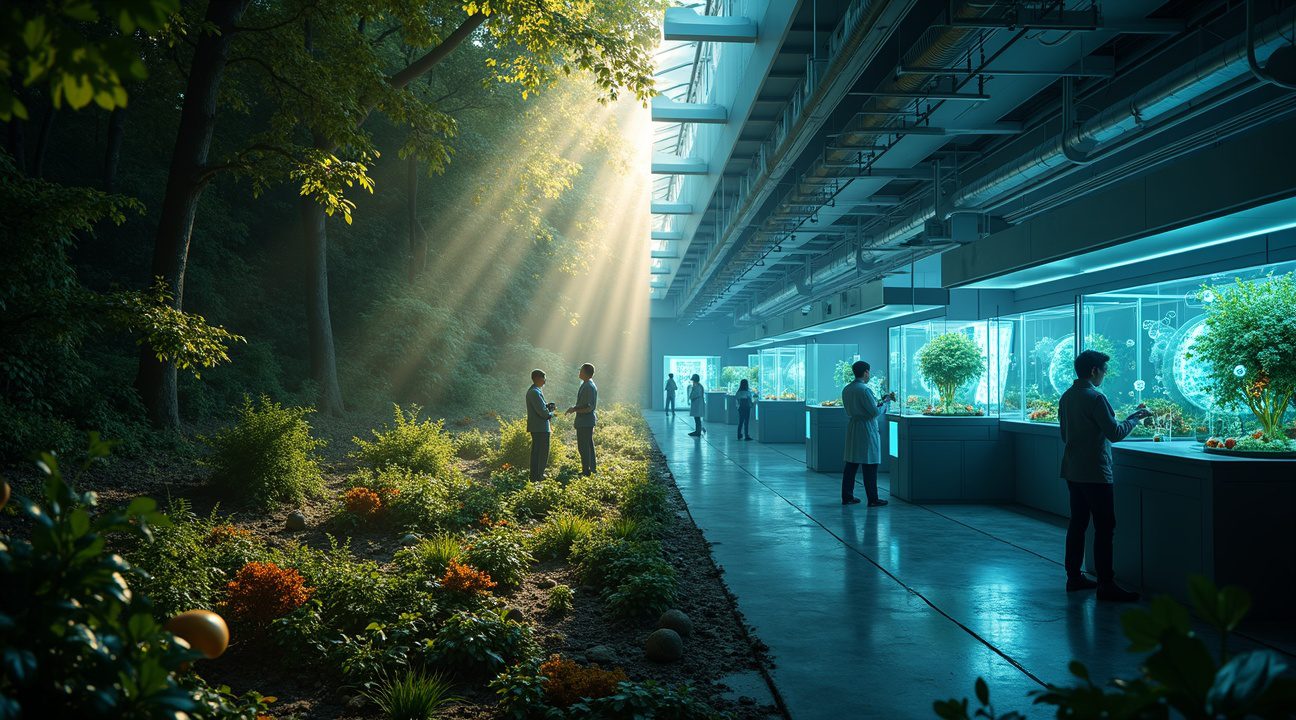
Potential Applications Transform Medicine and Manufacturing
The breakthrough in artificial life creation opens unprecedented opportunities across multiple industries, with biotechnology and medicine leading the charge. Synthetic organisms are poised to revolutionize drug discovery through engineered cells with precisely controlled metabolic pathways that can produce complex pharmaceutical compounds more efficiently than traditional methods.
Revolutionary Applications Across Industries
The most promising applications span several critical areas:
- Drug discovery benefits from organisms designed with specific metabolic functions that generate targeted therapeutic compounds
- Bioremediation employs synthetic cells engineered to survive extreme temperatures, pH levels, or toxic environments for environmental cleanup
- Smart materials manufacturing utilizes artificial organisms that respond to environmental stimuli or produce adaptive substances
- Medical cellular machines deliver targeted therapies directly to diseased tissues with programmable precision
- Industrial process optimization through biological systems designed specifically for manufacturing efficiency
Synthetic organisms represent a paradigm shift in therapeutic development. These engineered life forms can be programmed to seek out cancer cells, deliver precise drug doses, or repair damaged tissues at the cellular level. Unlike naturally occurring organisms that evolved for survival, artificial intelligence helps design these synthetic systems exclusively for human benefit.
Environmental applications prove equally compelling. Traditional bioremediation relies on naturally occurring microorganisms that often struggle in heavily polluted or extreme environments. Artificial life forms can be engineered to thrive in conditions that would kill natural organisms, making them ideal for cleaning up oil spills, radioactive waste, or industrial contamination.
Manufacturing applications extend beyond traditional biological production. These synthetic organisms could create materials that change properties based on temperature, pressure, or chemical signals. Imagine self-healing concrete infused with engineered organisms that activate when cracks appear, or textiles that adapt to weather conditions through biological responses.
The precision of synthetic biology allows researchers to eliminate unwanted evolutionary traits while amplifying beneficial characteristics. This targeted approach means artificial organisms can be optimized for single purposes without the biological baggage that comes with natural evolution. Advanced robotics and synthetic biology converge to create biological machines that operate with mechanical precision.
Medical applications particularly benefit from this precision engineering. Synthetic organisms can be designed to produce specific proteins, neutralize toxins, or deliver gene therapy with unprecedented accuracy. These biological machines could replace invasive surgical procedures with programmable cellular interventions that work from inside the body.
Industrial processes stand to gain significant efficiency improvements through artificial life systems optimized for specific manufacturing tasks. Unlike natural organisms that dedicate energy to survival and reproduction, synthetic versions can channel all resources into productive output.
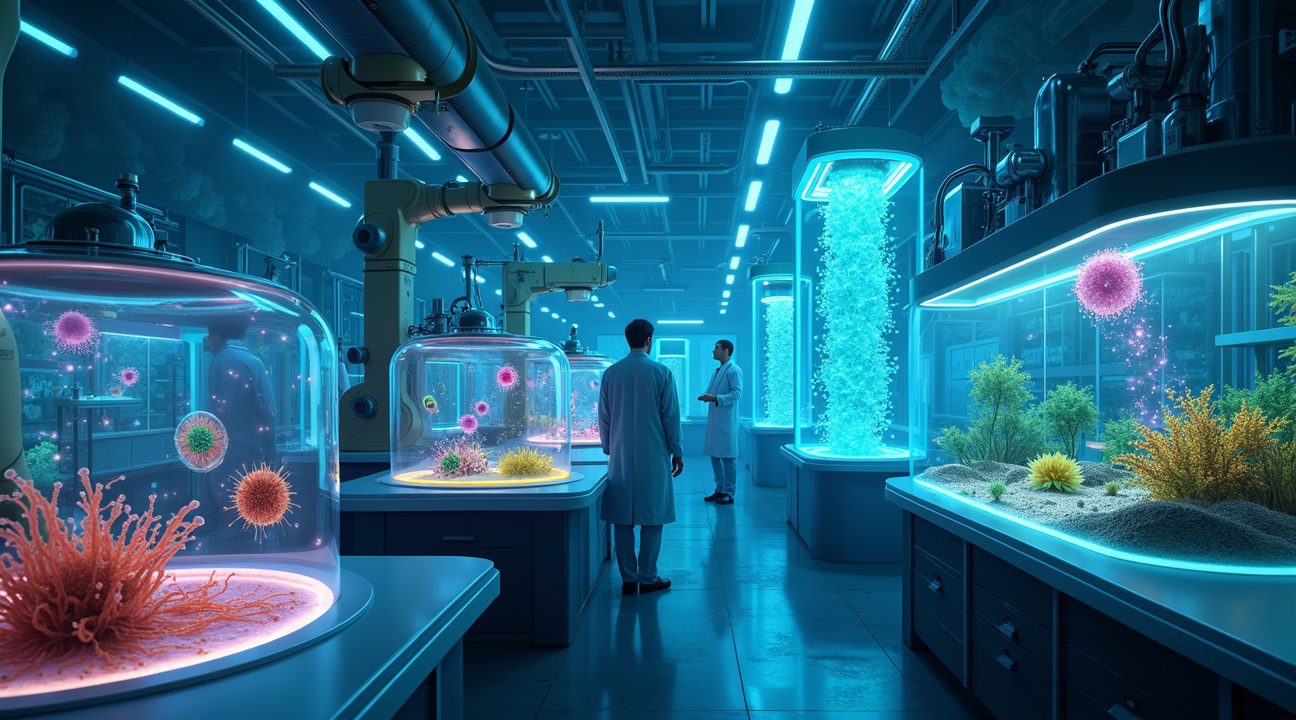
Ethical Questions Emerge as Synthetic Life Challenges Natural Boundaries
The creation of artificial life forms in laboratories has sparked intense philosophical debates about what defines life itself. Scientists now face the unprecedented challenge of determining where natural life ends and synthetic life begins. These artificial organisms blur traditional boundaries that humans have relied upon for centuries to categorize the living world around them.
Redefining the Value and Nature of Life
The ability to create life forms with specifically selected properties raises profound questions about life’s inherent value. Scientists can now design organisms with traits that don’t exist in nature, effectively becoming architects of new biological realities. This capability forces researchers to confront whether artificially created life deserves the same ethical consideration as naturally evolved organisms.
Traditional ethical frameworks struggle to accommodate these synthetic beings. Some argue that the method of creation shouldn’t determine an organism’s moral status, while others contend that artificial life represents a fundamentally different category of existence. The debate becomes more complex when considering that these synthetic organisms might possess the same basic functions as their natural counterparts—they can reproduce, respond to stimuli, and maintain homeostasis.
Ecological Integration and Long-term Classification
Perhaps the most challenging ethical consideration involves the potential for artificial organisms to evolve and integrate into existing ecosystems. Once released, these synthetic life forms could adapt and change in ways their creators never anticipated. Scientists face difficult questions about their responsibility for organisms that may persist and evolve long after their initial creation.
The prospect of synthetic organisms establishing themselves in natural habitats raises several critical concerns:
- Potential disruption of existing food webs and ecological relationships
- Competition with native species for resources and habitat space
- Unpredictable evolutionary pathways that could lead to unintended consequences
- Difficulty in distinguishing between evolved synthetic organisms and natural species
- Challenges in monitoring and controlling synthetic populations once established
These concerns become particularly relevant as artificial intelligence advances and enables more sophisticated synthetic organism design. The intersection of AI and synthetic biology could accelerate the creation of increasingly complex artificial life forms.
Scientists must grapple with the reality that their creations might eventually become indistinguishable from naturally evolved organisms. After generations of evolution and adaptation, synthetic organisms could develop characteristics that their creators never programmed. This evolutionary potential complicates efforts to maintain clear distinctions between artificial and natural life.
The responsibility extends beyond immediate safety concerns to encompass long-term ecological stewardship. Researchers must consider whether releasing synthetic organisms constitutes an irreversible change to Earth’s biosphere. Unlike other scientific innovations, synthetic life forms could reproduce and persist independently, making their effects potentially permanent.
Current regulatory frameworks prove inadequate for addressing these unprecedented scenarios. Traditional approaches to environmental protection focus on preventing harm from chemical pollutants or invasive species, not managing entirely new categories of life. Scientists advocate for developing comprehensive guidelines that address both immediate safety concerns and long-term ecological implications.
The emergence of synthetic life also challenges humanity’s relationship with nature itself. Some view these creations as a natural extension of human innovation, while others see them as a dangerous departure from natural processes. This philosophical divide influences how societies approach regulation and acceptance of synthetic organisms.
The debate reflects broader concerns about human intervention in natural systems. Warnings from various experts about emerging technologies underscore the importance of careful consideration before widespread implementation.
As synthetic biology advances, scientists must balance innovation with responsibility. The potential benefits of artificial life forms—from medical applications to environmental remediation—must be weighed against the risks of unintended consequences. This balance requires ongoing dialogue between scientists, ethicists, policymakers, and the public to ensure that synthetic life development proceeds thoughtfully and safely.
https://www.youtube.com/watch?v=nuCYt4VxA0o
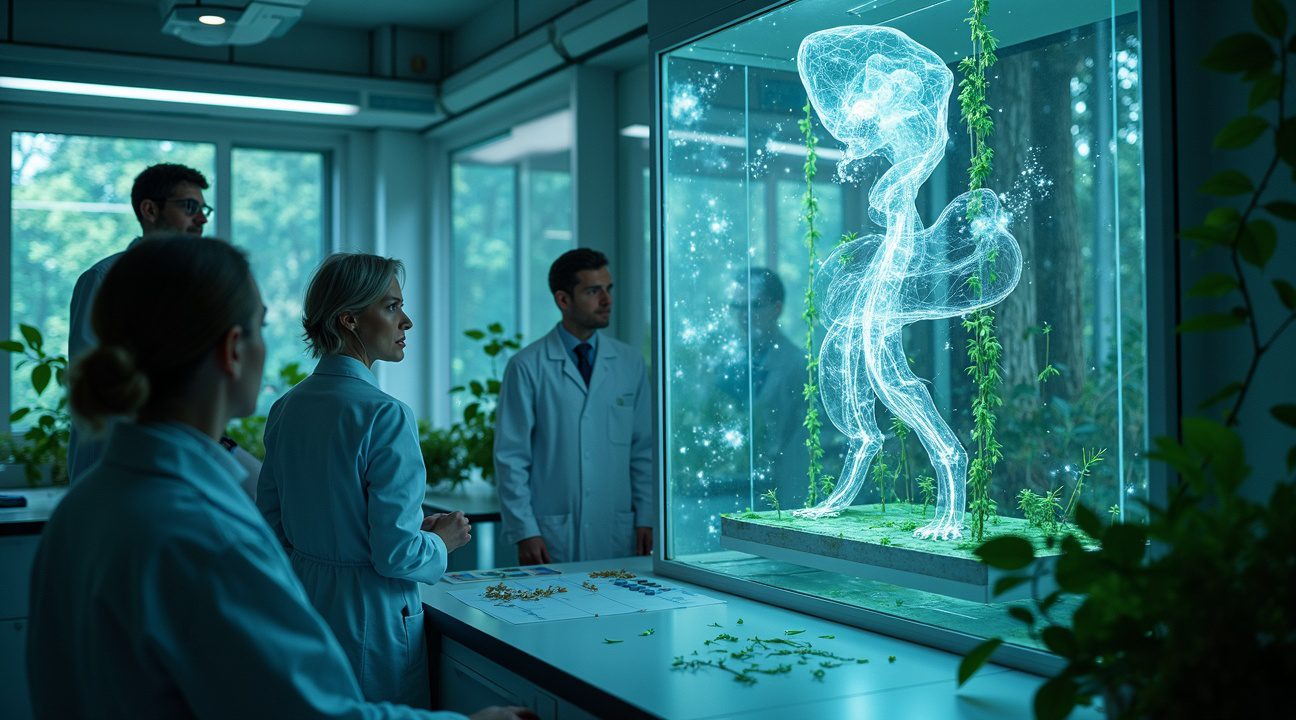
Sources:
Human Progress – Scientists Aim to Create Artificial Life in the Lab
Ecoticias – Artificial Life Created for the First Time in History: Behaves Like Living Organism
Sngular – Can Artificial Life Be Created?
Wikipedia – Artificial life
MIT Press – What Is Artificial Life Today, and Where Should It Go?
National Center for Biotechnology Information (NCBI) – [PMC Article]
University of North Carolina Research – Artificial Cells Created by Carolina Lab Act Like Living Ones
arXiv – [arXiv Preprint on Artificial Life]

